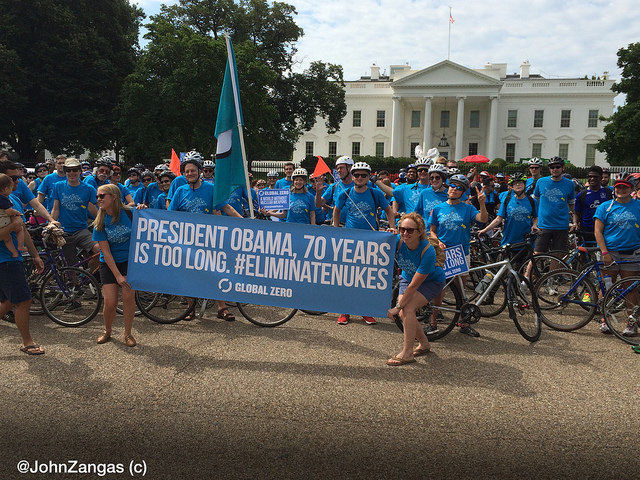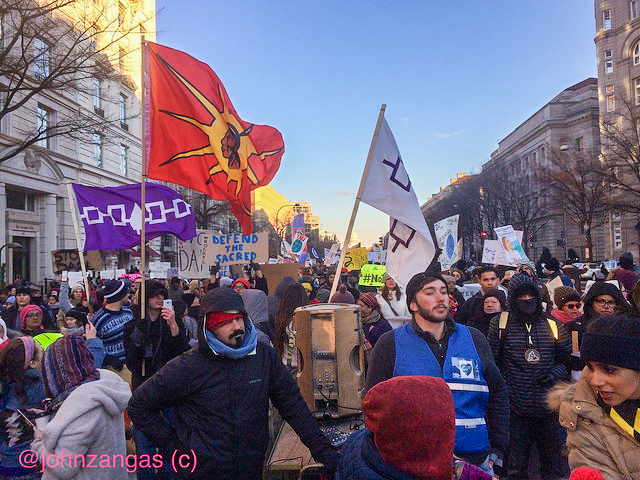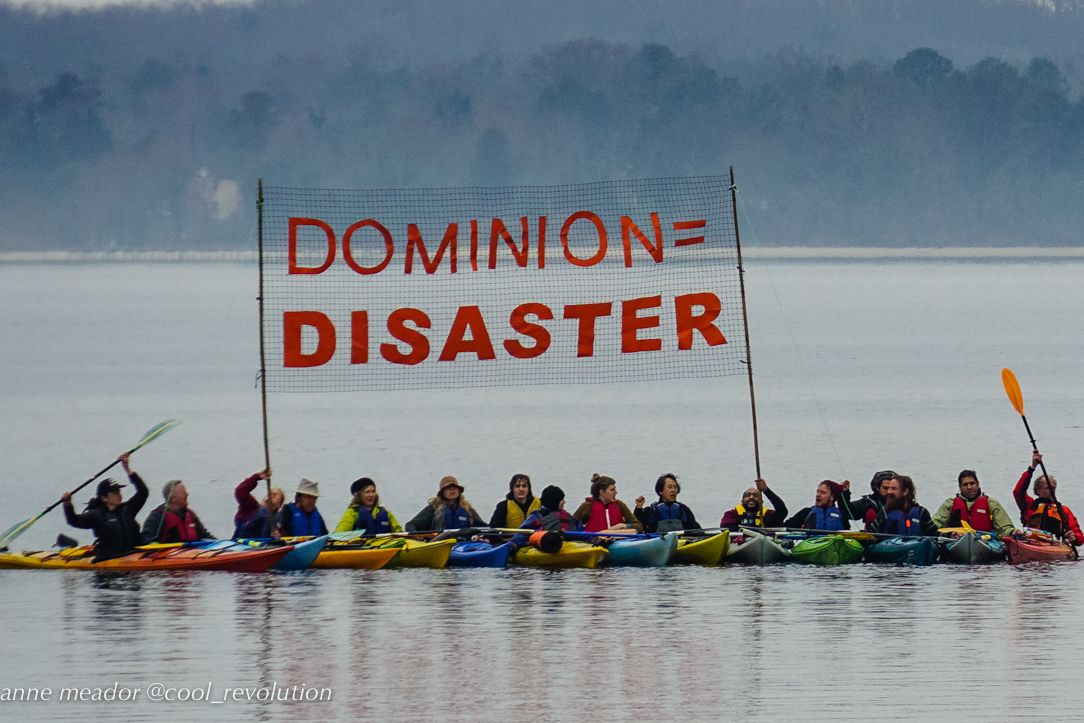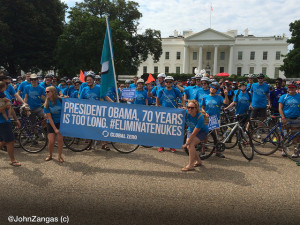
Former CIA agent Valerie Plame Wilson was among over 300 who met at the White House on Sunday, August 9, to embark on a bike ride around Washington, DC, exactly 70 years after the second nuclear bomb was dropped on Nagasaki, Japan in World War II. The bike riders followed a route which encircled the approximate area destroyed by the atomic bombing of Hiroshima in 1945. They remembered those killed in the first Atomic War and warned that the possibility of such a war remained as long as countries continued stockpiling nuclear weapons.
The “Bike Around The Bomb” ride was organized by Global Zero as a call to world leaders to take action to dismantle existing nuclear arsenals, which currently house over 17,000 atomic bombs. Similar bike rides took place in cities around the world. Speakers at the White House rally urged governments to disarm before a miscalculation or mistake causes a repeat of Hiroshima and Nagasaki.
Valerie Plame Wilson, who worked as a “deep cover” agent in the CIA to counter nuclear proliferation, suggested that that global nuclear posture now is more dangerous than in 1945, because there are thousands more weapons today and nine countries capable of producing them. “Nuclear weapons are one of two existential crisis facing the world today, the other being global warming,” she said. “We have just gotten lucky that there hasn’t been a nuclear accident from miscalculation or misunderstanding.”

Plame Wilson was the target of reprisal during the Bush administration because her husband Joseph Wilson claimed that the Bush administration had exaggerated claims about Saddam Hussein’s nuclear capability.
Accidents involving nuclear weapons have nearly happened several times. In September 1983, Soviet defenses prepared ICBMs for launch against the U.S. after light reflecting off clouds triggered a rogue radar signature. Another incident happened in 1979 when a faulty chip in a U.S. computer triggered an alert. In all cases military personnel realized the errors before missiles were launched.
But in 1962, the Cuban Missile crisis, coupled with political tensions between the U.S. and the Soviet Union, became the closest world powers ever came to a nuclear conflict.
Lawrence Korb, Senior Fellow at the Center for American Progress, said that today, more countries such as Iran and North Korea possess nuclear technologies to build their own arsenals. Of the Iran nuclear deal, Korb said, “This will not solve all the problems, but it will be a step forward in dealing with proliferation.”
According to Korb, today’s nuclear weapons are far more lethal than those used in World War II. “The bombs we have today would cause 600 times more damage than Hiroshima and Nagasaki,” he said.
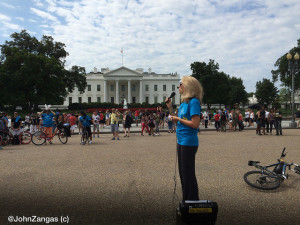
“Nuclear weapons are the epitome of the abuse of power,” said Martha Allen, Director of the Women’s Institute for Freedom of the Press. Allen expressed concern that nuclear weapons could be used against military targets but with huge civilian collateral damage. “It’s also pretty arrogant of the U.S. to have nuclear weapons when they’re telling other countries not to develop them,” she said.
Meredith Horowski, campaign director of Global Zero, said that “renewed attention” to the nuclear threat was a positive development. “We have thousands of people coming together to eliminate nuclear weapons,” she said. Riding the bike loop together was to get an idea of the area that a Nagasaki-sized nuclear blast would cover if it had happened here.
Global Zero calls for the United States and Russia to negotiate deep cuts to nuclear arsenals, followed by international negotiations to eliminate nuclear weapons completely by 2030.
- Valerie Plame Wilson passes the Capitol.

